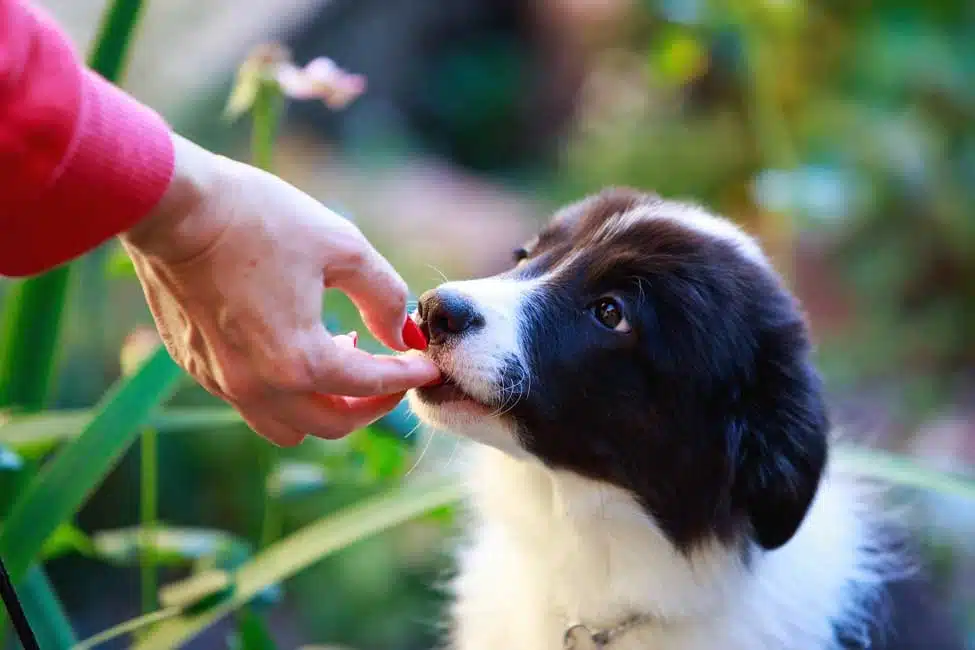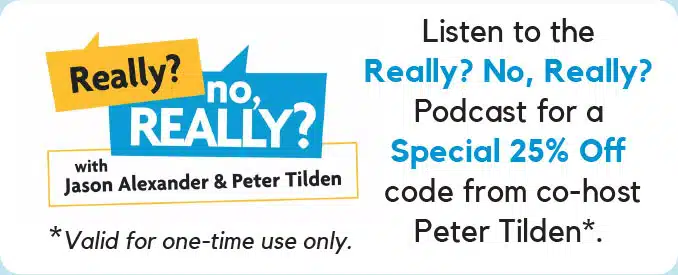
Dog breed names, much like human names, are derived from a vast array of influences – some are named for the area they originated in, others are named after their parents, and still, others are named after the way they look or act. The origin of the Collie breed name is a toss-up between two of these concepts: some sources hold that the word is derived from “coaly,” a reference to the breed’s original black coat, while others believe that a name is actually a form of the German “kuli” or the English “coolie,” both terms referring to a diligent worker. No matter where the breed name actually came from, there’s no doubt that these bright-eyed dogs are a popular canine companions for loving owners.
That being said, what is a Collie? One of the biggest points of confusion for prospective pet owners is that two distinct breeds – Collie and Border Collie – are often used interchangeably in conversation. Believe it or not, these two pooches are not the same dog! While they may look the same – particularly between a smooth-coated Standard Collie and a Border Collie – there are key attributes that set each pup apart from the other. So what exactly are the differences between the two? Here are four key points of differentiation:
Head To Tail: Standard Collie versus Border Collie
The body structure of Collie vs. Border Collie is not wildly different, though a quick glance will show that the Border Collie is smaller in stature and overall size when standing beside their Standard Collie counterpart. The difference isn’t substantial – a male Border Collie’s shoulder height of 19-22 inches versus a male Standard Collie’s 24-26 inches, but it’s enough for a casual observer to notice.
When facing these dogs head-on, the difference in appearance is much clearer. When it comes to Rough Collie vs. Border Collie, the Rough/Standard Collie will have a voluminous coat beside the Border’s sleeker one. This difference is easy to see along the sides of the head: while the Border Collie does have some feathering on their ears and cheeks, the Standard has significantly more “floof” – enough so that it becomes part of their iconic silhouette. The rest of the body follows suit in terms of fur volume: a rough-coated Standard will look almost cylindrical when grooming and brushed out with a fluffy furred chest that hangs down like a beard, while a Border will have much more distinct lines to their torso, haunches, and legs, with a more clearly defined neck.
Both Standard Collie and Border Collie are considered to be agile and nimble, as both breeds were created to help herding sheep and livestock. A working dog needs to be quick to avoid the hooves of a crowd of sheep, after all! You’d only need to watch a Standard or Border at work for a few moments to see these quick movements for yourself: some fans go as far as to call these herders “canine poetry in motion.”
Stealing Hearts & The Spotlight: Standard Collie versus Border Collie
It’s only through great restraint that the name that is arguably the most well-known in “Colliedom” hasn’t come up yet – but here it is Lassie. The iconic TV show about little boy Timmy and his faithful canine companion began in 1954, running for an impressive 19 years after its debut. The titular female Lassie was played by several dogs over the course of the eponymous program, beginning with “Pal” – a rough-coated Standard Collie that was actually male. Pal’s trainers included the Weatherwax brothers, then-famous Hollywood animal trainers that assisted with other famous pooches like “Toto” (Terry, a female Cairn Terrier) from the original Wizard of Oz movie.
In modern entertainment, however, the Border Collie breed is definitely making its mark. With the rise of paneled talent shows like America’s Got Talent, dog-and-owner routines are becoming more popular. Owner Lukas and pup Falco, a Border Collie, dazzled as a wildcard act in Season 14 of “AGT,” following in the paw prints of human-and-Border combo Sara and Hero in Season 12. The nimble quality of the Border Collie’s movement and their diligence once trained properly made these two pups a shoo-in for the big stage. Border Collies are also shouldering more of the entertainment responsibility under the big top, as well: as animal welfare groups pressure circuses to retire exotic typically-caged animals like elephants and lions from shows, Border Collies are stepping up to perform in live, humane entertainment alternatives.
Life With A Dog: Standard Collie versus Border Collie
While the two breeds do share a lot in common as far as size and some traits – an affinity for herding, for example – their overall behaviors are very different. It’s important to learn the nuances to pick the right Collie for your lifestyle and home if you’re considering adding one to the family.
A “Rough” Collie (the Standard variety with the familiar fluffy coat) is sensitive and graceful – their strength lies in their agility, rather than muscular strength. They are known for being well-behaved around other pets and children and aren’t given to antagonizing or fighting. It is worth noting, however, that a bored Standard Collie can be a loud one as well: the breed is known for barking in the absence of company or stimulating toys and exercise. Of the two Collie breeds, however, the Standard Collie requires less physical exercise than a Border Collie – a walk once or twice a day and a little playtime with the family will suffice, even for younger pups.
The Border Collie, by contrast, is high-energy and wiry, built for fast turns and speed while herding. These majestic canines tend to be more high-strung comparatively, and harder (more stubborn) to train than their Standard counterparts. It’s no coincidence that Border Collies thrive at agility trials and similar opportunities to strut their stuff: challenges are essential to their well-being and to burn off some of their energy. While Standard Collies can get bored easily without stimulation, a Border Collie absolutely needs it, or they may turn destructive and tear up carpeting or furniture when left alone. Additionally, their herding instinct is very strong, and unless they are well-socialized from puppyhood, they may take it upon themselves to “herd” fellow pets or children in the home. A Border Collie will need frequent walks and, ideally, a large yard with a fence they can’t vault over – though this may be as tall an order as the necessary fence to keep this strong jumper contained. All in all, these herding dogs need frequent mental stimulation to stay happy and healthy.
Grooming & Care: Standard Collie versus Border Collie
This is one area where the two breeds share a great deal in common: their relatively long coats require special care and consideration. While Collies are not hypoallergenic, they do strut beautiful coats that are loved by many. Both Standard and Border Collies wear a double coat, originally intended to insulate them and keep them warm while herding in chilly weather. While these coats are excellent for thermal properties, they have a bad habit of shedding heavily during seasonal “blows” – events that tend to happen twice a year. During a coat blow, a Collie will actively shed a great deal of their coat as a new one grows in: great news for their looks, not-so-great news for your rugs, furniture, and clothing.
In order to keep shedding to a minimum, Collie owners should commit to brushing their dogs at minimum once a week, and preferably more often. Special brushes called “shedding blades” are a popular tool for Collie grooming: they resemble a metal loop attached to a handle and are slightly serrated to help gather loose fur from the undercoat. Professional grooming is also highly recommended to prevent matting and keep their nails trimmed. If you live in a wet or muddy area, baths with pet-friendly shampoos and conditioners are likely to be a necessity. The fluffy, feathered quality to various points on either Collie’s coats is notorious for getting dirty and picking up burrs and other natural debris.
Fun fact: The white tip of both Standard and Border Collies’ tails has an endearing nickname: the “Shepherd’s Lantern.” This white patch of fur was thought to be easy to see at night. When paired with the dogs’ natural tendency to hold their tail upright when leading, it offered shepherds an easy way to follow their dog and flock back home.
Finally, diets are also incredibly important for the health of both Standard and Border
Collies. Although these breeds aren’t given to overeating, free-feeding and a diet lacking in kibble can cause bloat and obesity. A precisely formulated, grain-free dog kibble is an ideal dietary choice for both Border and Standard Collies – and Lucy Pet offers a variety of dog foods to choose from to meet your dog’s specific needs. When looking for the best food for Collies, go for wholesome natural ingredients that are free of preservatives and harmful chemicals. With our premium line of high-quality, natural dog foods and treats, we’ve streamlined mealtime for your beloved pooch. Whether your Collie is still a young pup or a senior member of the family, you can provide your active pooch with the quality energy they need, minus the grains that may cause food sensitivities or stomach irritations – a win-win for everyone!
Sources Cited:
- “Collie.” American Kennel Club (AKC.org), (no publish date), https://www.akc.org/dog-breeds/collie/. Accessed December 12, 2019.
- “Rough Collie vs Border Collie – Which one is a better dog breed for you?” Dogell.com, (no publish date), https://dogell.com/en/compare-dog-breeds/rough-collie-vs-border-collie. Accessed December 12, 2019.
- “The Differences between Border Collies and Collies.” My Dog (Dog Knowledge.net), (no publish date), http://dogknowledge.net/general-dog-info/dog-breeds/the-differences-between-border-collies-and-collies.php. Accessed December 12, 2019.
- Hertz, Lisa. “Collie vs Border Collie: Which of These Is the Right Companion for You?” The Happy Puppy Site.com, January 23, 2019, https://thehappypuppysite.com/collie-vs-border-collie/. Accessed December 12, 2019.
- “Collie Eye Defect in Dogs.” PetMD.comhttps://www.lucypetproducts.com/blog/helpful-guide-to-the-best-food-for-collie-dogs, (no publish date), https://m.petmd.com/dog/conditions/eyes/c_dg_collie_eye_anomaly. Accessed December 12, 2019
- A Helpful Guide to the Best Food for Border Collies https://www.lucypetproducts.com/blog/helpful-guide-to-the-best-food-for-collie-dogs





Leave A Comment
You must be logged in to post a comment.